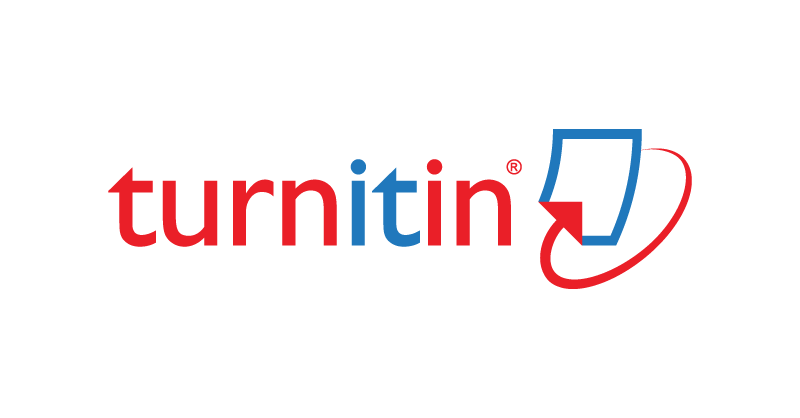The Implementation Of Machine Learning In Demand Forecasting : A Review Of Method Used In Demand Forecasting With Machine Learning
DOI:
https://doi.org/10.32734/jsti.v25i1.9290Keywords:
Machine Learning, Demand ForecastingAbstract
Demand Forecasting is essentials in making production decisions. Demand forecasting accuracy affects supply chain management and can reduce its costs. The development of information technology, especially artificial intelligence, has many benefits in many industrial sectors. The development of artificial intelligence is also applied to demand forecasting. The development of Artificial Intelligence technology in forecasting can produce better accuracy than conventional methods that do not use Artificial Intelligence. The use of machine learning in demand forecasting is in various industrial sectors ranging from small-scale industry to large-scale industry. This article will discuss research on the use of machine learning in demand forecasting for the things discussed, including machine learning models, data processing methods, and research variables. The purpose of this review is to see a comparison of the accuracy of each model, method, and variable used in demand forecasting using machine learning. The results of the review show that the characteristics of different product fluctuations require a different demand forecasting model approach. An appropriate approach can produce higher forecasting accuracy. Mistake in choosing a demand forecasting model can reduce the accuracy of demand forecasting. The demand forecasting model must also need to be updated to improve accuracy.
Downloads
References
A. Mitra, Fundamentals of Quality Control and Improvement, Wiley, New York, 2016.
Arvan, M., Fahimnia, B., Reisi, M., Siemsen, E. (2018). Integrating Human Judgement into Quantitative Forecasting Methods: A Review. Omega.
Bertaglia, P. R. (2016). LogÃstica e gerenciamento da cadeia de abastecimento. 3ª ed. Saraiva, 2016.
Brynjolfsson, E., Hitt, L. M., & Kim, H. H. (2011). Strength in numbers: How does data-driven decision-making affect firm performance? Available at SSRN 1819486.
C.R. Carter, D.S. Rogers, A sustainable supply chain management framework: moving toward new theory, Int. J. Phys. Distrib. Logistics Manag. 38 (5) (2008) 360–387.
Caruana, R., & Niculescu-Mizil, A. (2006). An Empirical Comparison of Supervised Learning Algorithms. Proceedings of the 23rd International Conference on Machine LearningNew York, NY, USA: ACM. https://doi.org/10.1145/1143844.1143865 (pp. 161–168).
Chen F.L., Ou T.Y. (2011). Sales forecasting system based on Gray extreme learning machine with Taguchi method in the retail industry. Expert Systems with Applications.
Ehrenthal, J. C., &Stölzle, W. (2013). An examination of the causes for retail stockouts. International Journal of Physical Distribution and Logistics Management, 43(1), 54–69.
Hastie, T., Tibshirani, R., & Friedman, J. (2009). Springer series in statistics, The elements of statistical learning. New York, NY, USA: Springer.
Huber, Jakob, & Stuckenschmidt, Heiner., 2020. Daily Retail Demand Forecasting Using Machine learning With Emphasis On Calendric Special Days. International Journal Of Forecasting 36 2020 1420 – 1438.
J.A. Rodger., 2014 Application of a fuzzy feasibility Bayesian probabilistic estimation of supply chain backorder aging, unfilled backorders, and customer wait time using stochastic simulation with Markov blankets, Expert Syst. Appl. 41 (16) (2014) 7005–7222.
Kuo, R. J. (2001). A sales forecasting system based on fuzzy neural network with initial weights generated by genetic algorithm. European Journal of Operational Research, 129, 496–517.
Lu, Chi-Jie, & Kao, Ling-Jing., 2016. A clustering-based sales forecasting scheme by using extreme learning machine and ensembling linkage methods with applications to a computer server. Engineering Aplication Of Artificial Intelligence 2016.06.015.
Lachtermacher, G., & Fuller, J. D. (1995). Backpropagation in time series forecasting. Journal of Forecasting, 14, 381–393.
Ma, Shaohui, & Fildes, Robert., 2020. Retail sales forecasting with meta-learning. European Journal Of Operational Research 2020.05.038.
Makatjane, Katleho, and Moroke, Ntebogang (2016) “Comparative study of holt-winters triple exponential smoothing and seasonal arima: forecasting short term seasonal car sales in South Africa.†in Risk governance & control: financial markets & institutions 6 (1): 71–82.
Malviya, Lokesh,et al., 2020. Backorder prediction in the supply chain using machine learning. 2020. Emerging Trends in Materials Science, Technology and Engineering. https://doi.org/10.1016/j.matpr.2020.11.558.
Mancuso, Paolo., Piccialli, Veronica., Sudoso, Antonio M ., 2021 , A machine learning approach for forecasting hierarchical time series. Expert System With Aplication. https://doi.org/10.1016/j.eswa.2021.115102.
MartÃnez, A., Schmuck, C., Pereverzyev, S., Pirker, C., Haltmeier, M. (2018). A machine learning framework for customer purchase prediction in the non-contractual setting. European Journal of Operational Research.
McAfee, A., & Brynjolfsson, E. (2012). Big data: The management revolution. Harvard Business Review, 90(10), 61–67.
Moroff, Nikolas Ulrich., Kurt, Ersin., Kamphues, Josef., 2021. Machine learning And Statistic : A Study For Assesing Innovative Demand Forecasting Model. Procedia Computer Science 180 (2021) 40–49. 10.1016/j.procs.2021.01.127.
M.P. De Brito, 2008. V. Carbone, C.M. Blanquart, Towards a sustainable fashion retail supply chain in Europe: organization and performance, Int. J. Prod. Econ. 114 (2) (2008) 534–553.
Puchalsky, W., Ribeiro, Gl T., Da Veiga, C P., Freire, R Z., Santos Coelho, L Dos. (2018). Agribusiness time series forecasting using Wavelet neural networks and metaheuristic optimization: An analysis of the soybean sack price and perishable products demand. International Journal of Production Economics, Vol.203, 174-189.
Tanizaki, Takashi,et al., 2018. Demand Forecasting In Restaurant Using Machine learning and Statistical Analysis. Procedia CIRP 79 2019 679-683. 10.1016/j.procir.2019.02.042
Van Donselaar, K. H., Gaur, V., Van Woensel, T., Broekmeulen, R. A., &Fransoo, J. C. (2010). Ordering behavior in retail stores and implications for automated replenishment. Management Science, 56(5), 766–784.
Walker Kevin.W ,et al., 2019. Application of adaptive boosting (AdaBoost) in demand-driven acquisition (DDA) prediction: A machine-learning approach. The Journal Of Academic Librarianship . .2019.02.013.
Xu, Shuojiang, & Chan, Hing Kai ., 2019. Forecasting With Online Search Quaries: A Big Data and Machine learning Approach. Procedia Manufacturing 36 2020.01.225.
Yue, L., Wangwei, J., Jianguo, Z., Junjun, G., Jiazhou, Z., Aiping, J. (2016). Product life cycle based demand forecasting by using artificial bee colony algorithm optimized two-stage polynomial fitting. Journal of Intelligent & Fuzzy Systems, Vol.31 (2), 825-837.
Tarallo, Elcio,et al., 2019. Machine learning In Predicting Demand For Fast Moving Consumer Goods : An Exploratory Research. IFAC Papers OnLine 52-13 2019 737–742. 10.1016/j.ifacol.2019.11.203.
Downloads
Published
How to Cite
Issue
Section
License
Copyright (c) 2023 Jurnal Sistem Teknik Industri

This work is licensed under a Creative Commons Attribution-ShareAlike 4.0 International License.
The Authors submitting a manuscript do so on the understanding that if accepted for publication, the copyright of the article shall be assigned to TALENTA Publisher Universitas Sumatera Utara as the publisher of the journal.
Copyright encompasses the rights to reproduce and deliver the article in all forms and media. The reproduction of any part of this journal, its storage in databases, and its transmission by any form or medium will be allowed.



















